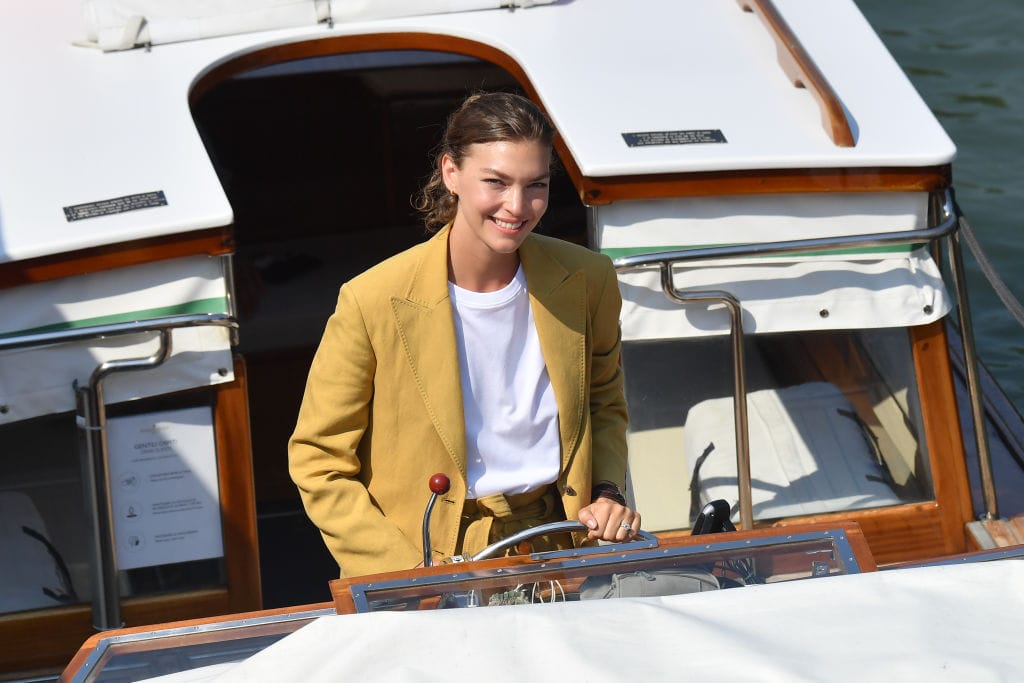BY

Photo by Stephane Cardinale – Corbis/Corbis via Getty Images
Arizona Muse has a captivating ability to incite conversations. First, it was through the enviably chic outfits she wore as a model and the campaigns, for names including Chanel and Estée Lauder, she fronted. More recently, her latest ‘shag’ haircut has helped the style trend on social media. But it’s within her role as a sustainability activist that Muse is most proud of her power to change people’s minds and actions.
In fact, you only need to read her Instagram bio – so often the place for models to showcase their multi-hyphenated careers – to see that Muse does things a little differently. Hers notes: “We are in a Climate Crisis. I’m educating myself about the solutions available and sharing what I learn right here.”
Here, Muse talks exclusively to Bazaar about her sustainability journey, a new charity effort and the simple plant-friendly rules that she lives by to be more eco-friendly without sacrificing on style.

Photo by David M. Benett/Dave Benett/Getty Images
I BECAME INTERESTED IN SUSTAINABILITY WHEN…
“I was about 26, so six years ago, after being invited to a charity luncheon by Synchronicity Earth, which was all about biodiversity. That was the first time that word had really been used in front of me and I was like, ‘wow. Why are we not talking about this?'”
“It shocked me that it wasn’t a common conversation – even though we were already experiencing climate change – so it sparked my own sustainability journey. I used to sit at fashion dinners and start saying how interested I was in it – I’d have maybe a minute and a half before the person next to me would turn away. But now, it’s amazing to see how the discourse has changed dramatically. Everyone’s talking about climate change now, and it’s amazing to witness.”
WE NEED MORE SUSTAINABLE FASHION BECAUSE…
“Alongside dyeing processes and the growing of natural materials for fashion, which are huge environmental polluters, there is a massive human aspect too. For example, the horrendous exploitation of the women who make the clothes for other women.”
“You can still love fashion – I’ve got a 12 year old who’s just discovering style and it is the sweetest thing to watch because fashion really is a tool for self-expression. We just need to make sure everyone who helps us express ourselves is treated with respect too.”
“Take the main players in sustainable fashion, like Nina Marenzi from The Sustainable Angle and Ursula de Castro from Fashion Revolution. They’ve been considered outsiders their whole careers, but they were really early to see what needed to happen. Fashion Revolution is focused around worker’s rights and unsafe working conditions, while The Sustainable Angle sources sustainable fabrics for the fashion industry. That’s so important because the most common thing you hear from designers is ‘where do I find the fabrics?’ Nina saw that niche and then in the last three to four years, it’s just exploded. It’s amazing to see someone who was right all along become a mainstream success.”
View this post on Instagram
SUSTAINABILITY STILL HAS A MONEY PROBLEM…
“I’m really blunt about the fact that your ability to shop sustainably depends on how much money you have. Let’s not beat around the bush: that’s the unfortunate truth. There are plenty of people who cannot afford to spend more money on something that could cost less if they just continue buying what they’ve always been buying. That is the reality and it shouldn’t be about guilting those people. Unfortunately, there’s a lot of sustainability shaming around. That’s why I want to focus on working on a system change that makes sure no one is left behind.”
“However, if you are lucky enough to have money right now, you have the privilege of being able to spend your money where it makes a difference. So shop with businesses that are doing the right thing: using materials that are not harming the planet, paying workers fairly, and localising their supply chains to lighten up on shipping.”
THE FUTURE OF MY SUSTAINABILITY ACTIVISM MIGHT SURPRISE YOU…
“My activism has really taken me deep into agriculture. I’ve just started a charity called Dirt, which will support biodynamic farming and put a strong emphasis on things that are not food. We know that our food is grown on farms, but actually everything, including our clothes and beauty products, are too. Take wood for example: it might be from a managed forest, but managed forests are only planted with one species. And that one species of tree will become very vulnerable to disease, because it’s not in a bio-diverse forest.”
“It all comes back to biodiversity. It’s the key to everything, but we are losing it everywhere. The single biggest thing we can do right now is promote biodiversity and practices that support it.”
This article originally appeared on Harper’s BAZAAR UK



